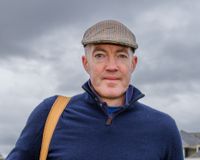Why The 1969 Ryder Cup Was So Much More Than Just 'The Concession'
The 1969 Ryder Cup is famous for Jack Nicklaus conceding a putt to Tony Jacklin. To remember it solely for that is doing a great event a great disservice.


The Ryder Cup of 1969 is remembered for a single moment – Jack Nicklaus bending down to pick up Tony Jacklin’s marker to concede a putt for a half in their match and a half in the event overall. “The Concession” has gone down in golfing lore as one of the great acts of sportsmanship. It’s remembered every time the biennial contest takes place. The act even has a golf club named after it – “The Concession Club” in Florida. But to boil the 1969 Ryder Cup down to a single moment of munificence is to do the competition a great disservice. It’s an event deserving of far wider commemoration. It was a tremendous performance from the British and Irish side against a US team that was heavily favoured. The two teams had passionate and, at times, feisty captains in Eric Brown and Sam Snead, the two squads featured an intriguing blend of youth and experience, and the matches were held at Royal Birkdale - one of the greatest and most challenging British links. After his opening practice round, Lee Trevino quipped – “It’s tough. I lost a dozen balls… And I hadn’t even left the locker room.”
Youth and Experience

Tony Jacklin was the 1969 Open champion
Two months before the Ryder Cup took place at Royal Birkdale, just across the water at Royal Lytham, a young Tony Jacklin secured a marvellous victory in The Open Championship. It was the first time a home player had lifted the Claret Jug since Max Faulkner in 1951. Jacklin was on form and he carried that through to the 1969 Ryder Cup. Jacklin was only 25 but he wasn’t the youngest player on the British team. Scotsman Bernard Gallacher was just 20 in September ’69. Peter Townsend was 23 and both Maurice Bembridge and Brian Barnes were 24. Those youngsters would all play their parts at Royal Birkdale but their youth was supported by a significant amount of experience within the home side. Peter Alliss was playing his eighth Ryder Cup, as were Bernard Hunt and Christy O’Connor. Although the GB&I team featured five rookies, the squad had participated in 29 previous Ryder Cup matches between them. By contrast the American side had just eight matches of experience and that was between two players – Billy Casper and Gene Littler, with four previous starts each. 10 of the 12 US team members were new to the event.
Unbelievably, it was the first Ryder Cup for the world’s best player Jack Nicklaus. Although he was a seven-time Major champion, he had never played in the trans-Atlantic contest. That was because the PGA of America had a slightly archaic rule at the time that their players had to gain five years’ experience before being eligible to earn Ryder Cup points.

Jack Nicklaus - 1966 Open champion
The fact then that the US side contained 10 rookies is a touch misleading – they were a side of great competitive experience. Sam Snead’s 12 men were an average of 33 years-old and had won a huge number of tournaments and a significant amount of money between them. The US had won the last five straight Ryder Cups and not too many, on either side of the pond, thought the 1969 instalment would see a different outcome. The American press saw it only going one way.
Thomas Reedy, writing in the Gettysburg Times commented on the nonchalant mood of the Americans pre-match. He described how the US team had won $1.5 million already in 1969 and asked the simple question of who would triumph – “the relaxed rich or the battling poor?” Surely, there could be only one result.
The British newspaper men certainly weren’t brimming with confidence. Even when the GB&I side played some good stuff in practice, writing in the Daily Telegraph, John Campbell could only stretch his hopefulness to saying there might be, “some grounds for mild optimism.”
The Americans were confident that their best player (Nicklaus) would lead the way, but the “Golden Bear” hadn’t been playing well, whereas the British talisman Tony Jacklin had.
Subscribe to the Golf Monthly newsletter to stay up to date with all the latest tour news, equipment news, reviews, head-to-heads and buyer’s guides from our team of experienced experts.
By the time Nicklaus conceded the final putt to Jacklin, the Englishman had beaten him twice (convincingly in the first singles by 4&3) and halved with him once.
Americans Were Lucky

Lee Trevino
Today, we look back and imagine a far weaker home side clinging to the coattails of the mighty Americans and sneaking the most improbable of underdog story results. The reality is that most pundits of the time felt the Americans were quite fortunate to sneak away with a half and to retain the cup.
Writing in the October issue of Golf Monthly, (which you will find in the new Golf Monthly archive) Ryder Cup legend Dai Rees wrote at length on the subject in a round-up article with the headline, “Americans Were Lucky.”
“I honestly believe the Americans were fortunate to get a tie. In match after match, luck seemed to favour them,” he said. He describes Billy Casper’s ball “miraculously running through a bunker on the 15th” in his match against Brian Barnes.
Writing in the Liverpool Daily Post, Leslie Edwards described crucial putts by Tommy Aaron and Dan Sikes that only dropped “after an appreciable interval of time.”
American captain Sam Snead was famously irritated with Nicklaus for gifting the half to Jacklin and that appears to have been the case - “When it happened, all the boys thought it was ridiculous to give him that putt. We went over there to win, not to be good ol’ boys.” He later said.
But, at the time, he also had to concede that the US had got away with one to a certain extent. He described the British team as the, “best he had ever seen.” And he said straight out – “The Brits played better.”
The stats confirm it. In total scoring of all the games, GB&I were slightly ahead of their rivals. And Jacklin was best of all – Of the 104 holes he played, he birdied or eagled 35 of them.
In Golf Monthly, Dai Rees paid tribute to Eric Brown for his team selections, his management, and in particular, of the pin placements –
“This year, pins were generally placed in the back centre of the greens, this gave British players the chance to play their much-used pitch-and-run,” he said. “I am sure this had a more settling effect on the British players than the Americans.”

US Captain Sam Snead (left) and GB&I Captain Eric Brown - On friendly terms... Seemingly at least!
We remember the 1969 Ryder Cup for sportsmanship, but it wasn’t always to the fore.
Before the contest, GB&I’s bald-headed, testy Scottish captain Eric Brown told his boys not to look for their opponents’ balls in the tough Birkdale rough. He later rolled back, saying he had misunderstood the possibility of a penalty being incurred, but a tone was set.
In the foursomes, Ken Still reacted badly on the 13th tee when Maurice Bembridge asked him to move out of his line of sight. He made a show of asking spectators to also move before hooking his own ball into trouble. His playing partner Lee Trevino could only advance into a bunker. Still hit the face of the trap and the ball rebounded and hit him. He said nothing and it took Trevino to intervene and concede the hole.
Still continued to display his fiery character in the fourballs. Playing Brian Huggett and Bernard Gallacher, Still’s playing partner Dave Hill putted out of turn on the 7th green. Gallacher pointed it out. Still picked up Gallacher’s marker, threw it at him and said, “You can have the hole and the goddamn Cup!” There was then a shouting match between Still and Huggett on the 8th fairway culminating in another dispute on the green which basically left the four players on the verge of a full-on fist fight.
“Bernard Gallacher had to be pulled off one of our guys,” Frank Beard later said.
Not exactly friendly rivalry.
Firsts and Lasts

The 1969 Ryder Cup was one of firsts, including the fact it was the first tie. It was the first time the contest had featured teams of 12 men. Up until 1969, the sides had been 10. It was the first Ryder Cup in which it was compulsory for both sides to use the larger “American” ball. It was the first time Jack Nicklaus played and the first time Arnold Palmer had been missing since 1959. It was also a last Ryder Cup for the great Peter Alliss, and a fitting one for him to bow out on.
In the end it came down to Nicklaus vs Jacklin at Birkdale but there had been some memorable performances from the home players. Irish veteran Christy O’Connor put on a sterling display in the morning singles to beat 1969 US money-leader Frank Beard by a commanding margin of 5&4. In the afternoon singles, another of the old guard – Peter Butler came back from three down through four holes against Dale Douglass to win by 3&2. Bernard Gallacher impressed as he beat Lee Trevino 4&3.
GB&I had forged ahead at the start of the final day’s play but the Americans bounced back and it all came down to the final match between the two star players. Nicklaus was much improved in their afternoon rematch, and he birdied the 16th to go ahead. Jacklin needed to win the last two for the home side to win outright. He got one back on the 17th. People remember the two-footer conceded on the 18th, how many recall Jacklin holing from 45 feet on the 17th to keep hopes alive?
The last was halved after some very nervy and then nerveless putting from Jacklin then Nicklaus, and the crowds celebrated a fine gesture and a fine contest when Nicklaus conceded “that putt.”
In the melee that ensued, Eric Brown was confused as to the final outcome. Immediately after, in the interview room he said he was “obviously disappointed to have lost out by half a point.” His mood cheered considerably when it was pointed out that the teams had halved!
It had been a confusing event all round – The Americans were favourites but the British were better, there were on-course scuffles and unlikely performances, there were firsts and lasts, there were lucky bounces and improbable comebacks… And on top of it all, there was a (perhaps slightly too generous) gimme that gets all the attention. The 1969 Ryder Cup was quite a rollercoaster and it deserves to be remembered for so much more than simply “the concession.”

Fergus is Golf Monthly's resident expert on the history of the game and has written extensively on that subject. He has also worked with Golf Monthly to produce a podcast series. Called 18 Majors: The Golf History Show it offers new and in-depth perspectives on some of the most important moments in golf's long history. You can find all the details about it here.
He is a golf obsessive and 1-handicapper. Growing up in the North East of Scotland, golf runs through his veins and his passion for the sport was bolstered during his time at St Andrews university studying history. He went on to earn a post graduate diploma from the London School of Journalism. Fergus has worked for Golf Monthly since 2004 and has written two books on the game; "Great Golf Debates" together with Jezz Ellwood of Golf Monthly and the history section of "The Ultimate Golf Book" together with Neil Tappin , also of Golf Monthly.
Fergus once shanked a ball from just over Granny Clark's Wynd on the 18th of the Old Course that struck the St Andrews Golf Club and rebounded into the Valley of Sin, from where he saved par. Who says there's no golfing god?